Abstract
1. This is a report of further observations on the response characteristics of electroreceptors in the bill of the platypus, Ornithorhynchus anatinus, first described by Gregory, Iggo, McIntyre & Proske (1987). 2. The main finding is that, with the bill immersed in water, applying a potential difference between large plate electrodes on either side of the bill, produced detectable responses in a population of electroreceptors to field strengths as low as 4 mV cm-1. Threshold for individual receptors lay between 4 and 25 mV cm-1. 3. An electric dipole placed in the water close to the receptive field could also elicit responses, threshold being lowest when the cathode was near the centre of the field. On several occasions the most sensitive spot was seen, under the microscope, to correspond to the mouth of a mucous sensory gland (Andres & Von Düring, 1984). Response intensity fell when the dipole was moved further away, the drop being less steep in a direction over the top of the bill towards the mid-line. 4. For individual receptors the latency of the first impulse initiated by supramaximal voltage pulses was 1.1-1.8 ms. Latencies tended to be shorter when the site of the receptor lay closer to the recording electrodes. Plotting each latency against conduction path length for eleven receptors gave an approximately linear relation from which was calculated an average axonal conduction velocity of 56 m s-1. The plot yielded an estimate of impulse initiation time of 0.8 ms. It is argued that this is too short to include a synaptic delay. A peripheral synapse is found in all non-mammalian electroreceptors. 5. Electroreceptors responded to both steady and rapidly changing potential gradients. For ramp-shaped gradients of 1-50 V s-1 peak firing rate was approximately proportional to log stimulus velocity. In response to sinusoidal potential changes a 1:1 relation between each afferent impulse and the peak of the stimulating waveform could be obtained over the range 12-300 Hz. Threshold was at its lowest at 50-100 Hz. Tuning curves measured with the bill immersed in water were little different from those obtained by focal stimulation with the bill in air. 6. It is concluded that platypus electroreceptors, supplied by the trigeminal nerve, and which are therefore not part of the acoustico-lateralis system as in non-mammalian electroreceptors, are also unique in not having a peripheral synapse. Furthermore, they are able to respond to both steady and rapidly changing voltage gradients.(ABSTRACT TRUNCATED AT 400 WORDS)
Full text
PDF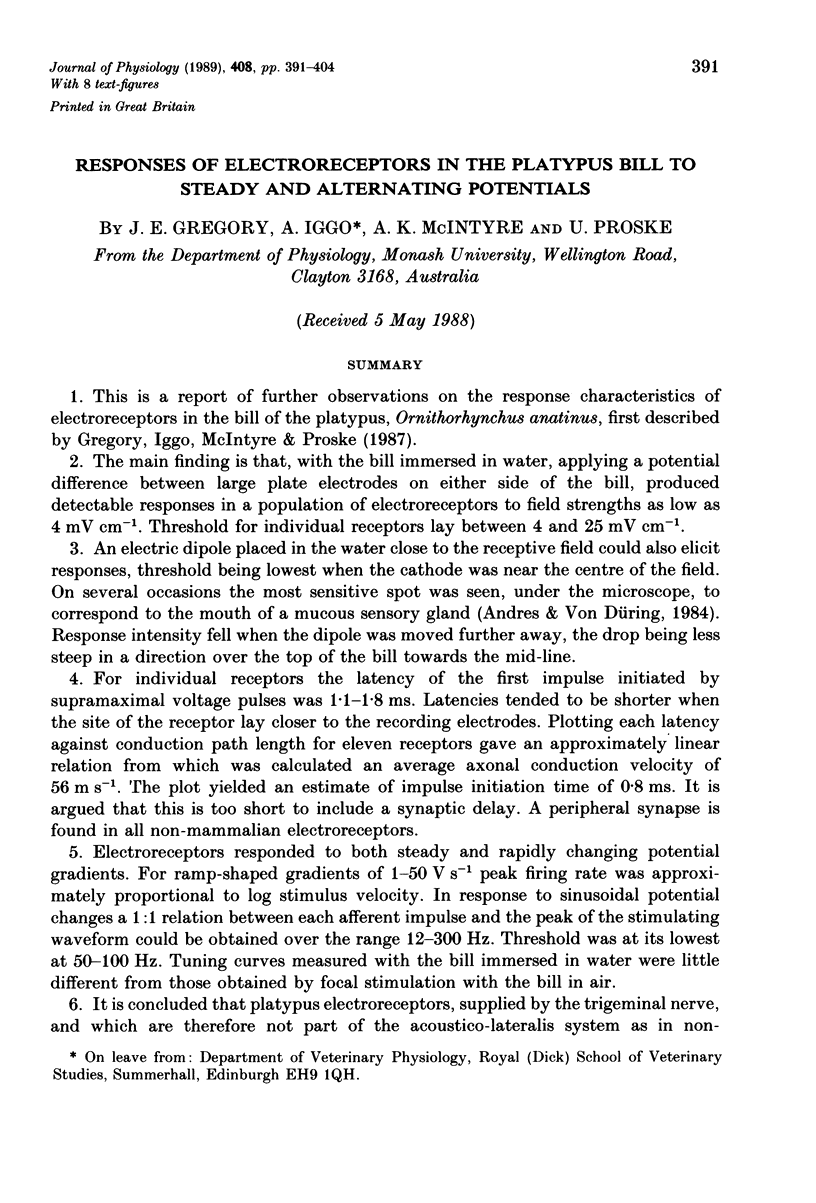
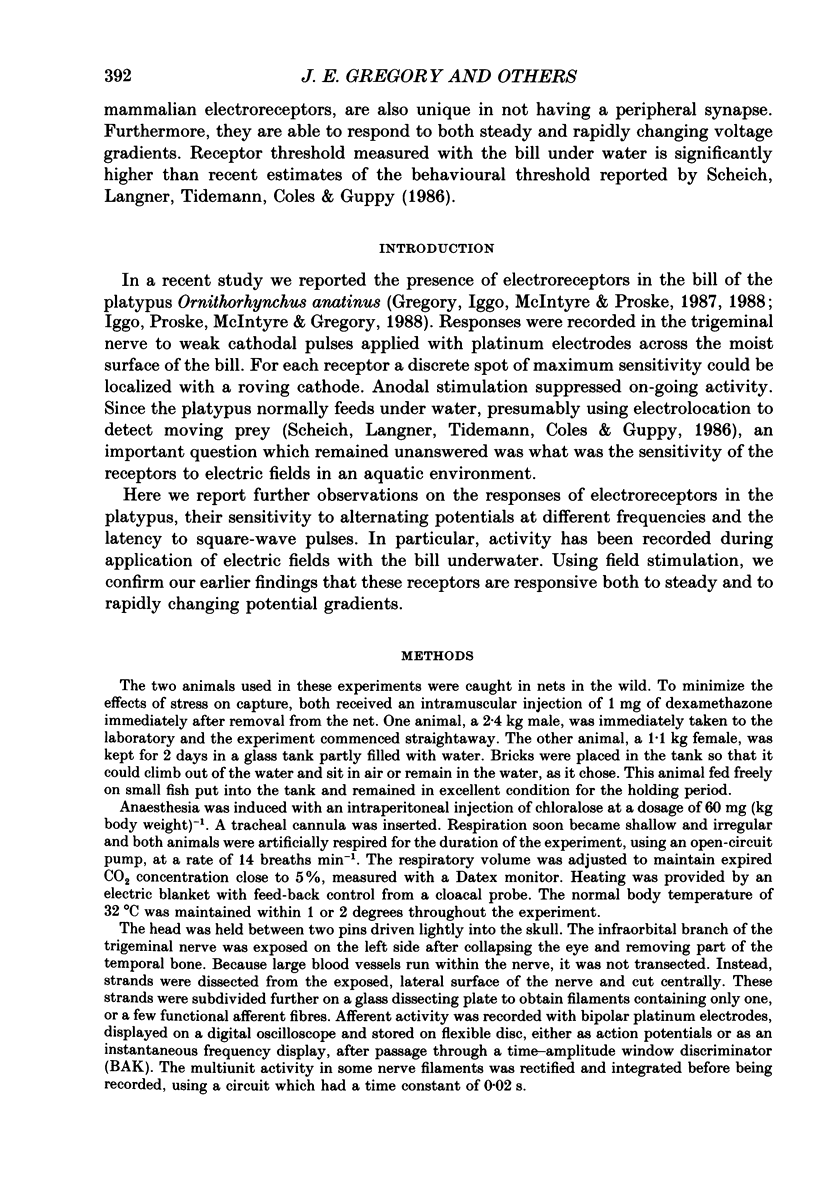
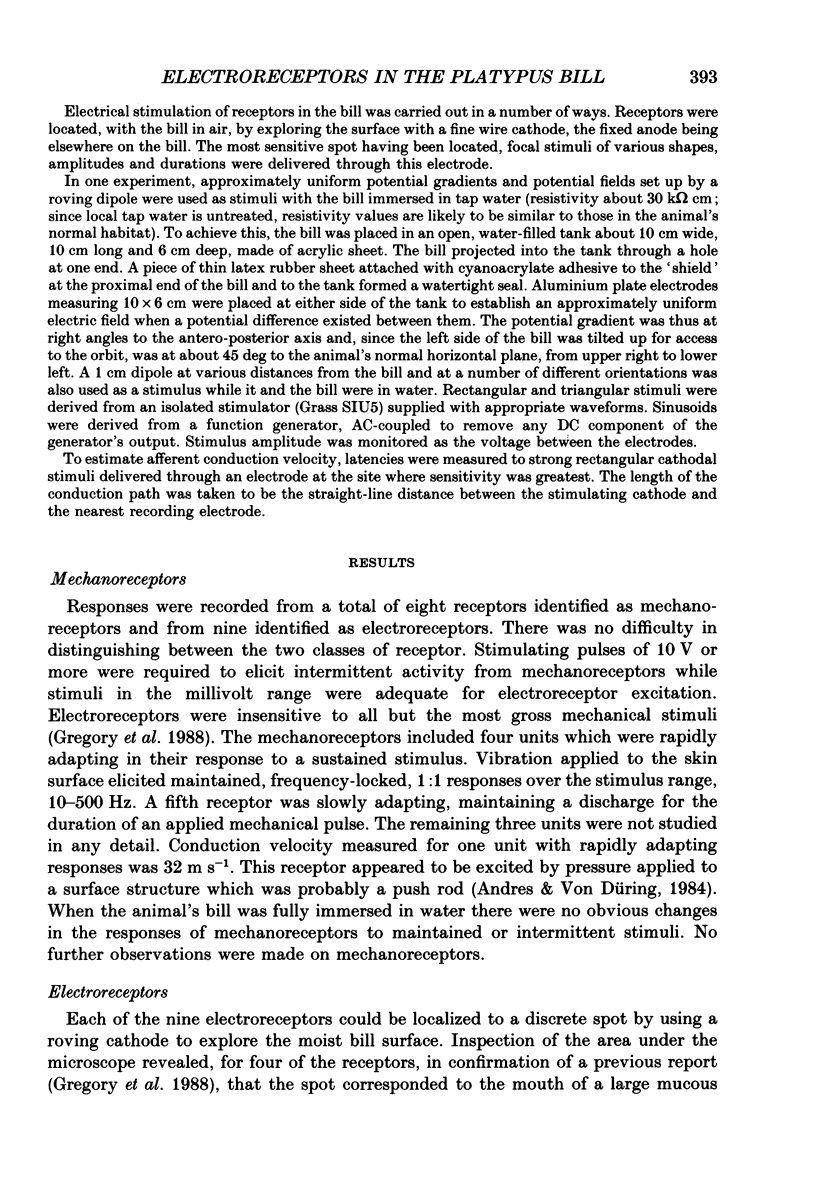
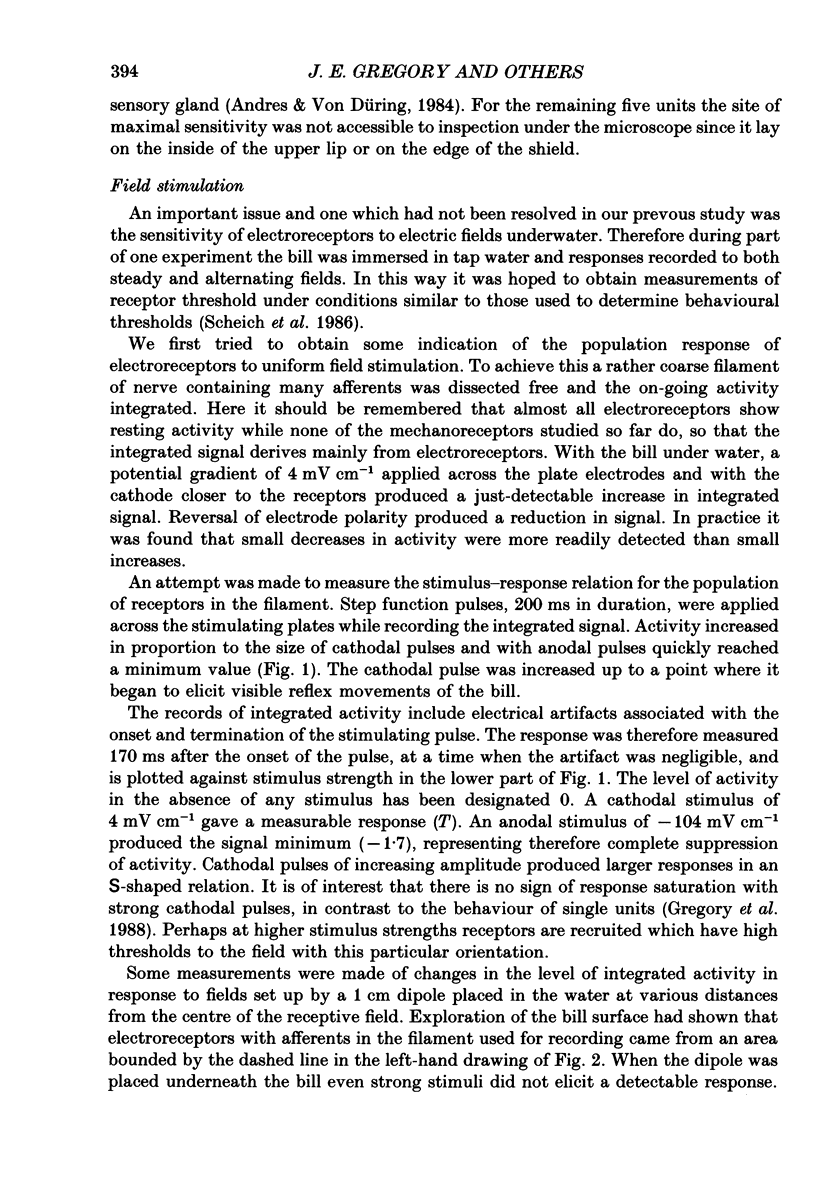
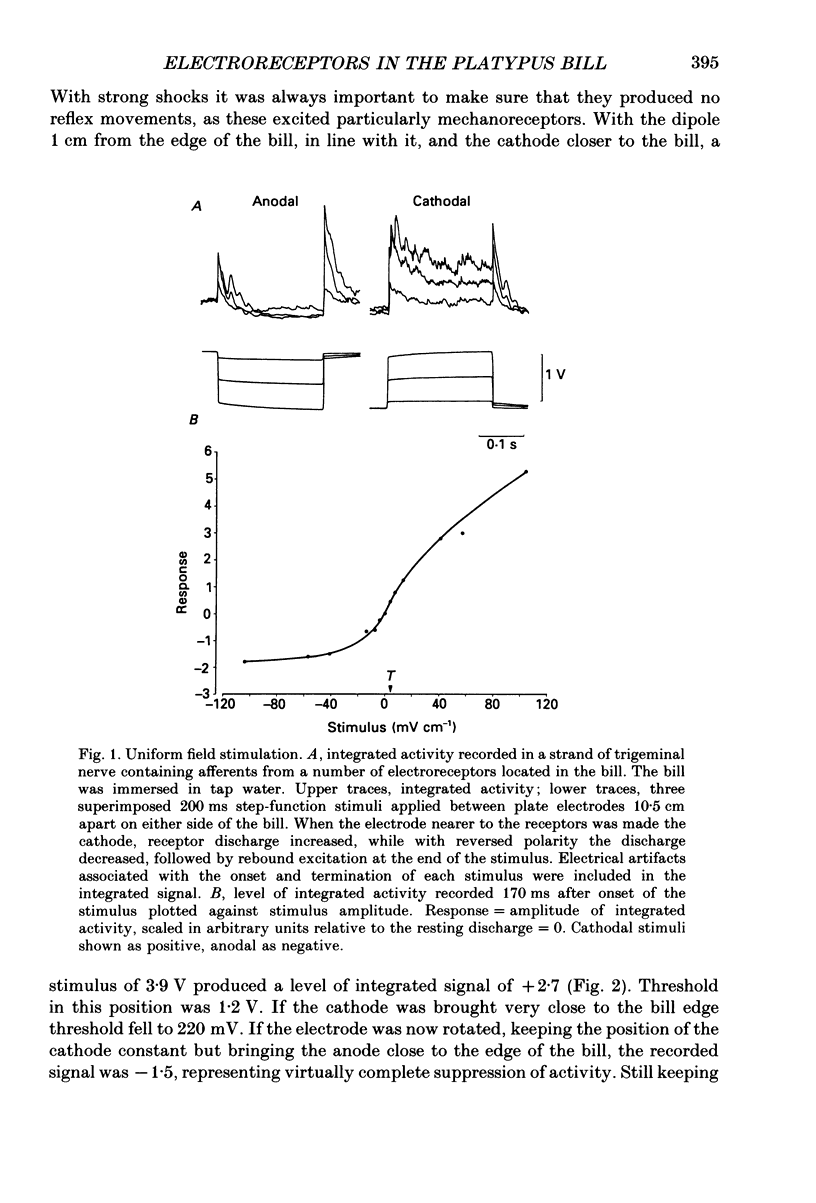
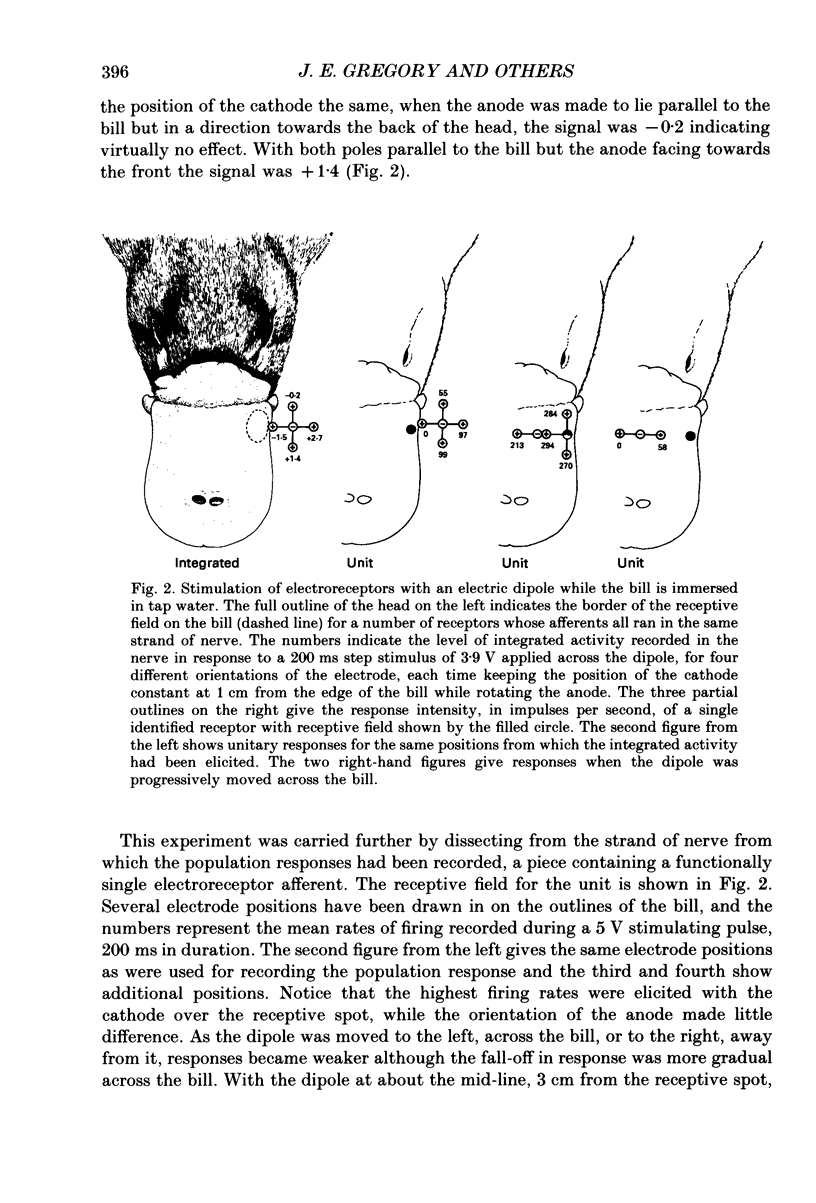

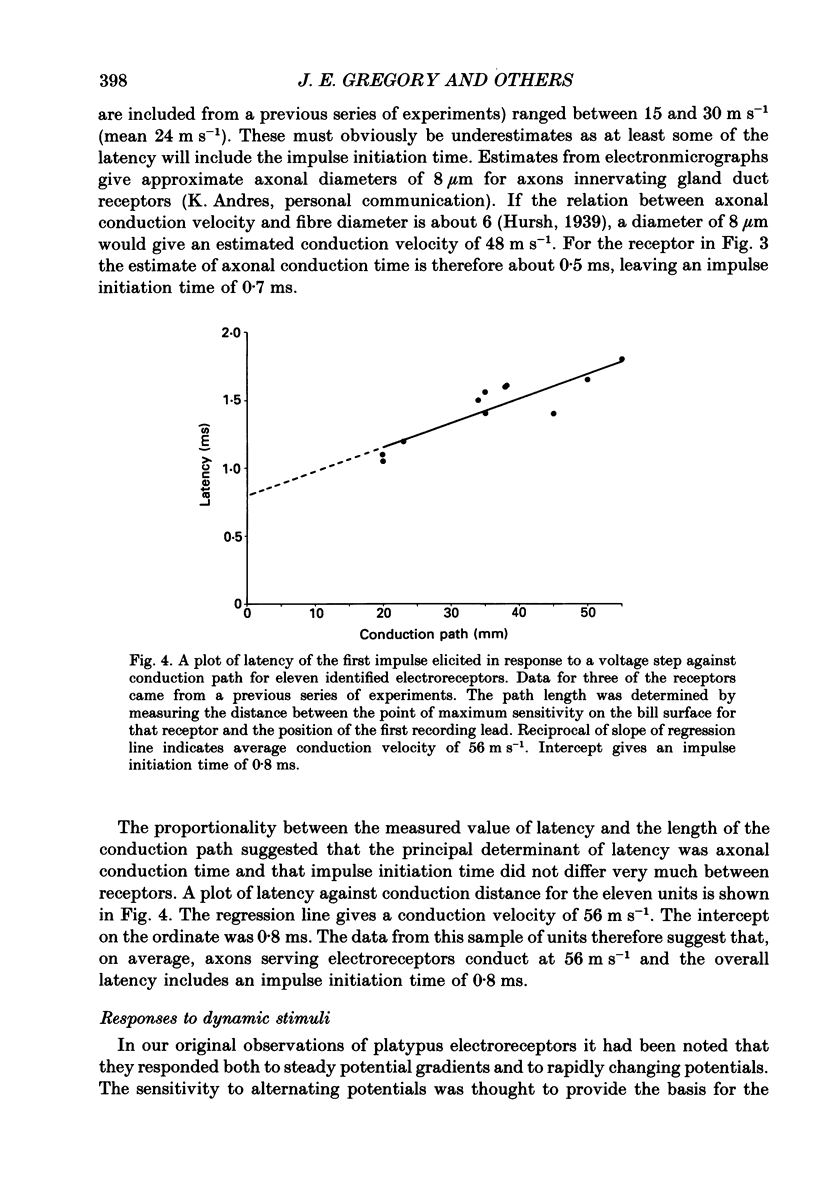
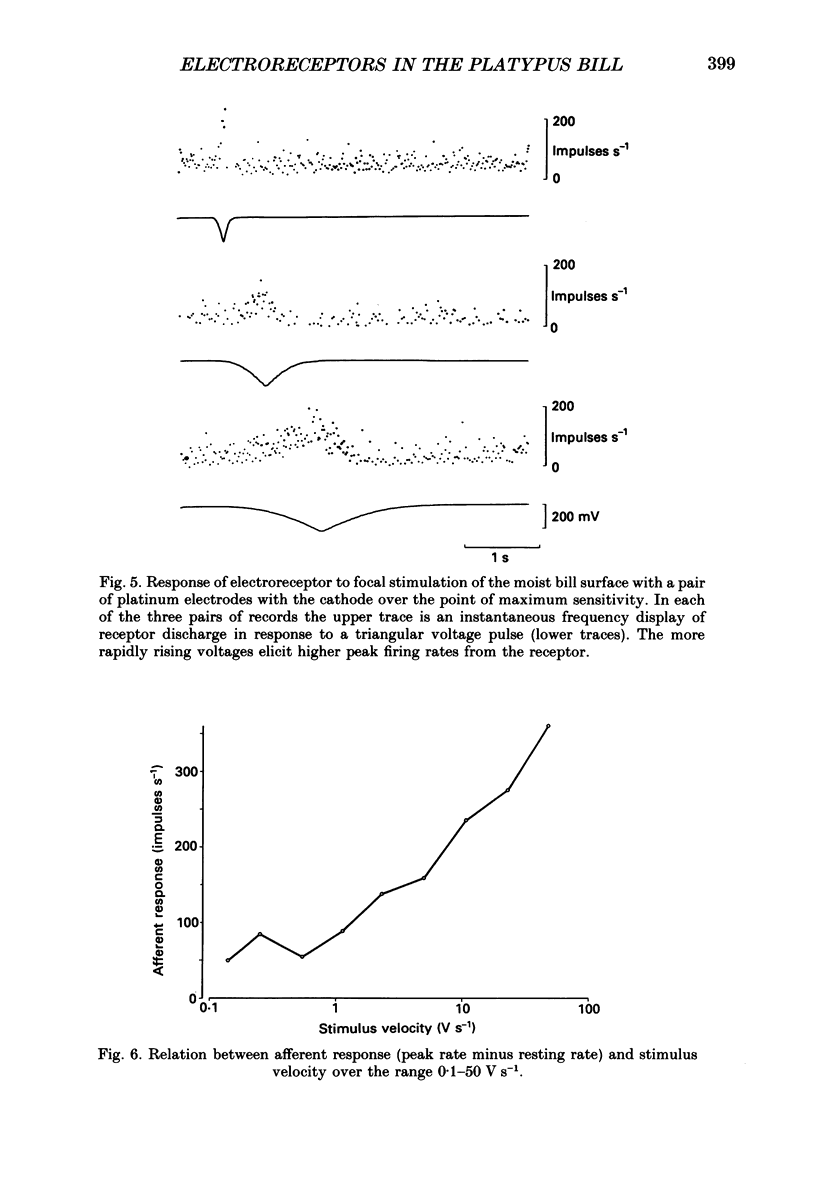
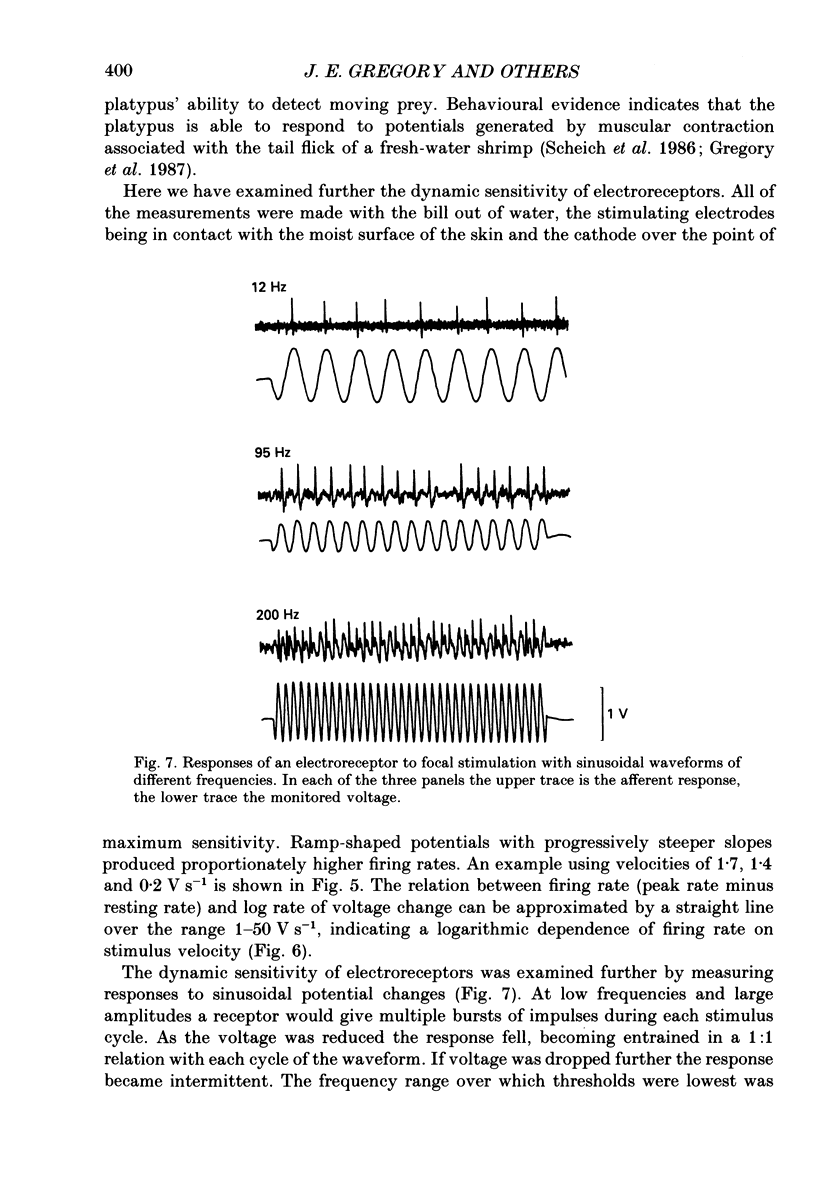
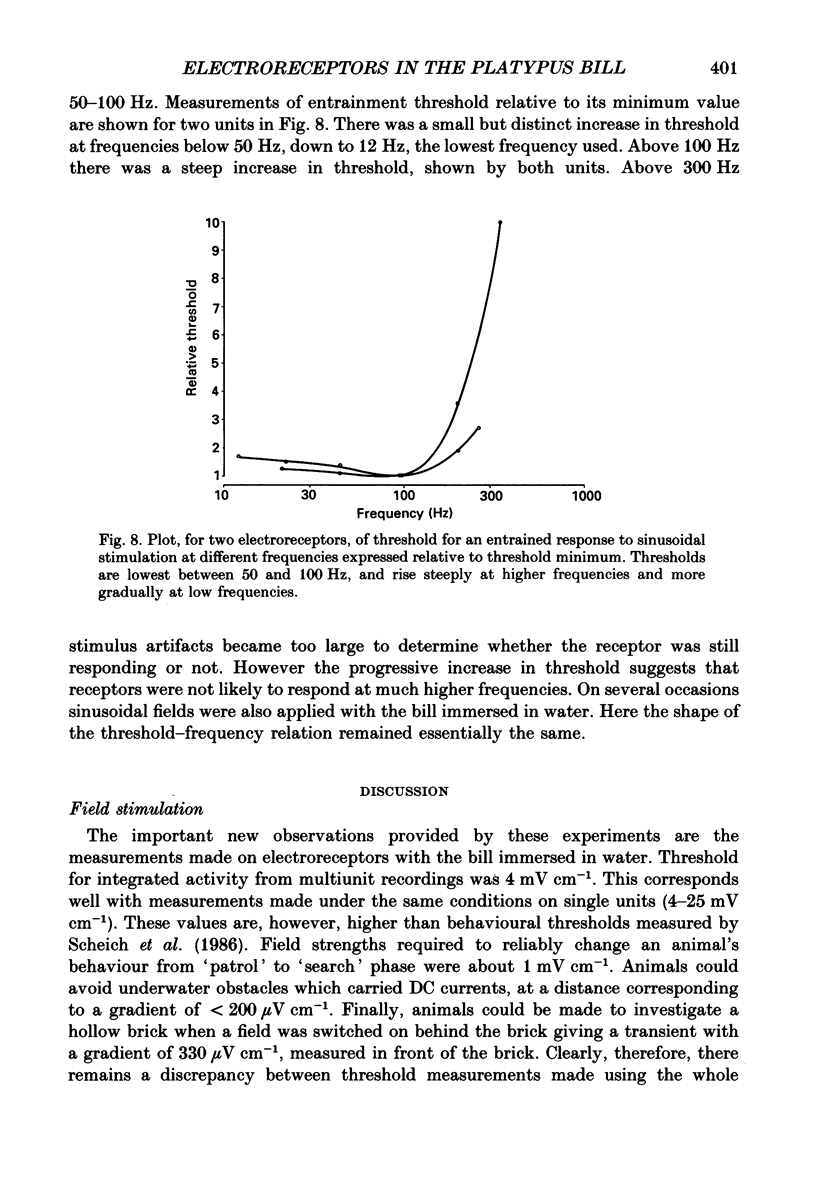

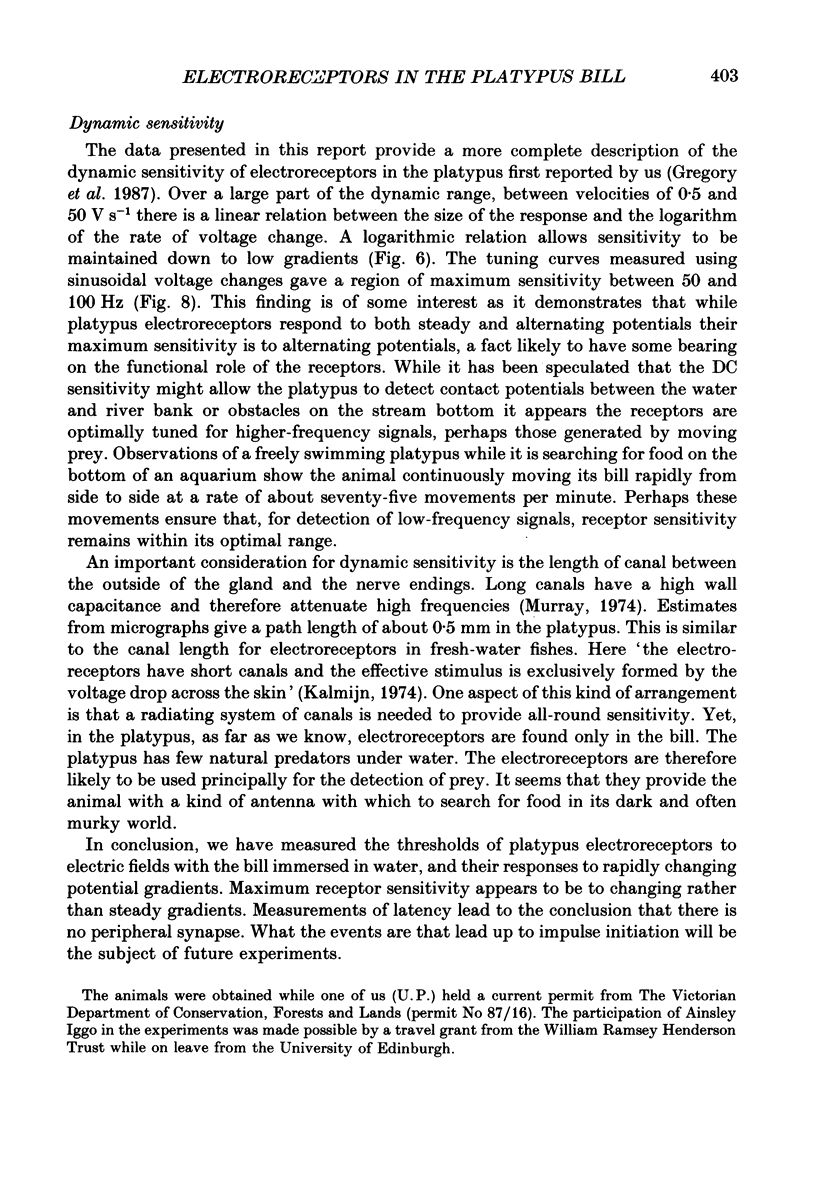
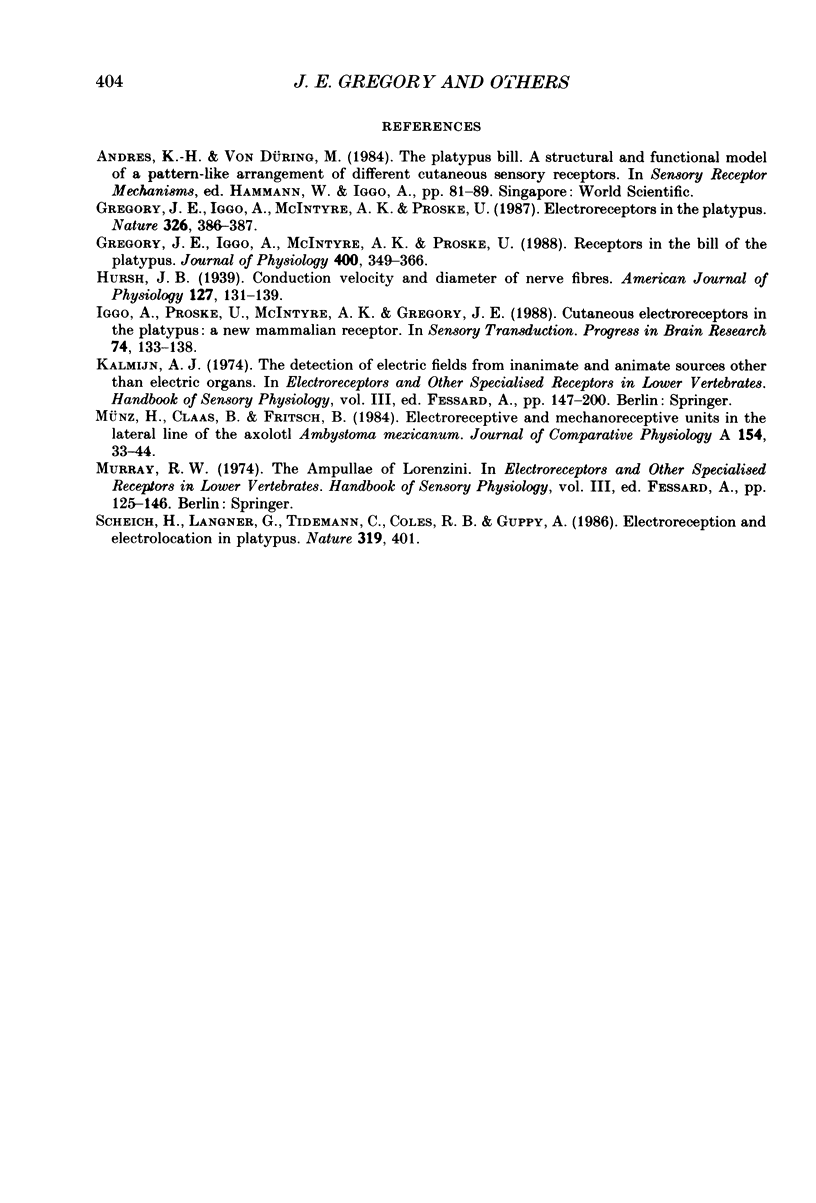
Selected References
These references are in PubMed. This may not be the complete list of references from this article.
- Gregory J. E., Iggo A., McIntyre A. K., Proske U. Electroreceptors in the platypus. 1987 Mar 26-Apr 1Nature. 326(6111):386–387. doi: 10.1038/326386a0. [DOI] [PubMed] [Google Scholar]
- Gregory J. E., Iggo A., McIntyre A. K., Proske U. Receptors in the bill of the platypus. J Physiol. 1988 Jun;400:349–366. doi: 10.1113/jphysiol.1988.sp017124. [DOI] [PMC free article] [PubMed] [Google Scholar]
- Iggo A., Proske U., McIntyre A. K., Gregory J. E. Cutaneous electroreceptors in the platypus: a new mammalian receptor. Prog Brain Res. 1988;74:133–138. doi: 10.1016/s0079-6123(08)63007-1. [DOI] [PubMed] [Google Scholar]
- Scheich H., Langner G., Tidemann C., Coles R. B., Guppy A. Electroreception and electrolocation in platypus. 1986 Jan 30-Feb 5Nature. 319(6052):401–402. doi: 10.1038/319401a0. [DOI] [PubMed] [Google Scholar]


